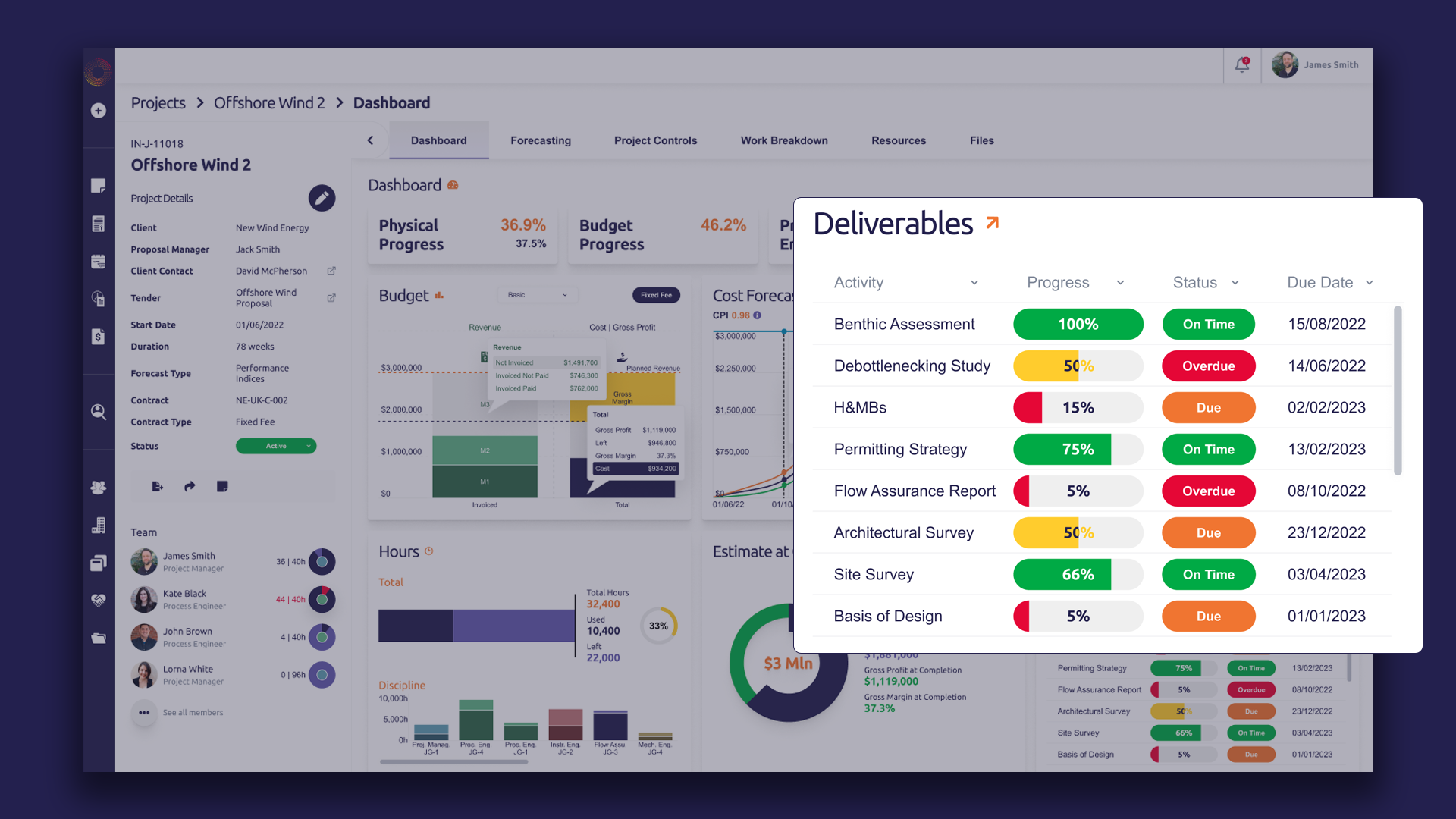Behind all innovative new products, there are always one or two inspiring people who have the essential, unswerving vision and passion to bring an idea to life. Colin Manson is the co-founder of Xergy Group and the brains behind our project software Proteus. It is no exaggeration to say he lives and breathes all things Proteus. If you have any questions about what Proteus is, how it works, and why it will transform your business, Colin is the man to talk to. We took half an hour out of his busy schedule to sit down and chat. We wanted to know where Proteus has come from, what the key workflows in Proteus are, and who it is designed for.
Could you tell us a bit about your background, Colin Manson?
I was a Chemical Engineer. I studied at Heriot-Watt in the 1980s and worked predominantly in the Oil and Gas industry. The core part of my career was in the consultancy space, initially Genesis Energies and then as founder of Xodus Group, which continues to be a successful global business to this day. It is that consultancy experience that has driven me to develop Proteus, to address some glaring gaps.
What is the biggest gap you wanted to address?
If you work in a consultancy business or an engineering company, you do most of your work on spreadsheets. You probably have an array of CRM tools, finance tools, and project tools, but I will bet you no matter what the size of your company, you will still be using spreadsheets. They are what the majority of engineers and project teams use to do cost estimates, estimated completion costs, and other key metrics. You take data out of systems and pull it into a spreadsheet so you can do your calculations. And if I go back into my career, we were doing the same. I wanted to change that by developing a system that worked for everybody, not just the finance team or the people using the CRM. We have some very specific workflows that sit in that middle space. There is no point in us trying to compete with the big CRM tools out there like Salesforce, Pipedrive, or Hubspot which dominate the market. Equally, there are the big boys like Oracle and SAP in backend finance. So we have focused on some super slick workflows that are designed to make people’s lives faster, and more efficient.
Can you briefly describe how Proteus works at the heart of a company’s digital transformation?
Our three key workflows start with opportunity management which moves seamlessly to proposal management and then project management.
The opportunities workflow is about deciding whether a tender is worth entering or not. If you are a bigger company you will have processes for making these decisions. You might do it in meetings or on a flowchart or spreadsheet. We have developed a slick workflow that makes the go / no-go stage easy. It allows you to work through a risk-based decision-making process and lets you decide whether to go for a bid or not go for a bid. The key advantage is that it creates a digital record that you can share and analyze on a global scale. You can view your bid rate and see why you made decisions. These are key insights that you can’t learn if the data is sitting in someone’s inbox or on a meeting room whiteboard.
So what happens if you decide to bid for a project?
If you decide to bid, the next stage is to develop a proposal. When we started, the proposal module was our main USP. It remains very unique because no other software does it as comprehensibly as Proteus. Most people working in a consultancy hate writing proposals because you are not booking time. Proposals are rarely something you get paid for and often something you have to do in between other tasks. Very few companies have a department for proposal writing: most consultancies have people both selling and doing the work. This means you write a proposal one day, do the work another day, and write a report the next day. We have made it super slick and easy to build an excellent proposal. All the boring stuff like finding CVs, and adding past experience… where does all that information live? It normally is filed somewhere on a server, or somewhere in somebody’s head. Proteus holds all that data and allows you to add it quickly to a document with a well-structured cost estimate and plan. If you are managing projects you will have a list of tasks linked to costs and resources. You might call it a CTR catalogue or a work package group or something similar. Proteus builds cost estimates around the work breakdown structure (WBS). It allows you to build target margins, and add teams, resources, and timelines. You can list past experience, add an execution statement, and everything a proposal needs. Using integrations with Microsoft Word and Sharepoint, creating consistent, great-looking documents is simple.
Let’s say our proposal wins us the project. What happens next in Proteus?
The final part is the project side. Generally, when a project is won you have to start from scratch, building out your project plan. Proteus does that at the click of a button: your WBS is pulled through from the proposal into the projects module. All you have to do is allocate resources, whether that is software, people, or equipment and then off you go. Where we have focused on is project controls. This is where you can see easily whether your project is in good shape or not. You can see in advance if you are missing forecasts and targets, so you are not acting after the event. We talk to clients and by the time they get data out of their finance system, clean it up, run the reports and issue it to a client, they are a week late and can’t mitigate against delays and problems. Proteus runs data in real time, integrating with backend ERPs. This means you can see where your project is and where it is going and you can make decisions at the right time.
A lot of this efficiency is driven by a really good user interface which makes it super easy. In the consultancy space, if you are in a seller-doer role you may not be a dedicated project manager. You are juggling writing proposals with client management as well as doing project management. By making the interface of Proteus intuitive we have made it very easy for the “non-project-manager” to manage projects. That doesn’t exclude full-time project managers and project controllers, but it does make life a lot easier.
What about all the other project workflows included in Proteus?
The three key workflows in Proteus: opportunity go/no-go, proposals, and projects all have various supporting workflows. These include team management, contract management, resources management, invoicing, and purchasing. These are all key enablers that support the three main parts of Proteus. Using existing and custom APIs and integrations these features can be provided by a client’s existing tools if necessary.
So who exactly are the key workflows in Proteus designed for?
We designed Proteus to be used by consultancies and engineering companies that sell or rent equipment, and software. If you have an asset, a person, or a piece of equipment or software that you supply to an operator or developer, you can use Proteus to improve your margins and make your work more efficient.
If you are a consultancy you are selling people. Our sweet spot is companies that have a high volume staff, all writing timesheets. If you are a company that does a high volume of bids, for example, 100s of bids a month, that is where Proteus provides incredible value. The speed you can write a proposal is fantastic. If you write 100 proposals a month and it takes you 20 hours to write each you are spending 2,000 hours a month on writing proposals. Proteus can get that down to 5 -6 hours a proposal. This huge saving goes straight into your bottom line.
About Proteus
Proteus developed by a Scottish-based tech company, Xergy Group, is an end-to-end project management solution developed for the energy and engineering consulting industries.
Proteus is industry-proven and enables consultancies to meet project demands across the full lifecycle, from proposal development to project delivery. With robust sales and project delivery modules, Proteus helps its customers win more business, increase efficiencies, manage expenditures, and improve project controls.
Critical workflows, automation, and controls are integrated into Proteus. These include opportunity evaluation, proposal building, resource planning, budget tracking and forecasting, real-time multi-level restricted dashboards, and project performance analytics.
Third-party integrations and customised solutions allow Proteus’ users, which include C-suite, project leads, and engineers, to get the exact software solution needed for their business.
We offer a free onboarding consultation service to ensure your company account is set up to your company’s needs.
How to get Proteus
Proteus operates under a software-as-a-service (SaaS) model. We offer Enterprise packages and flexible pricing solutions: contact our team to learn more.
We designed Proteus to be simple, and that means you can get up and running on Proteus without an IT team or support from a programmer. You will want to spend a bit of time configuring the admin console so that you have everything set up to suit your company structure, but it’s very intuitive and you don’t need a PhD in IT.
However, we want you to get the best out of what is a brilliantly powerful tool, so don’t hesitate to ask for our support. We have a team of product experts who are ready to help you with the configuration process, so get in touch today by filling out the form below:



